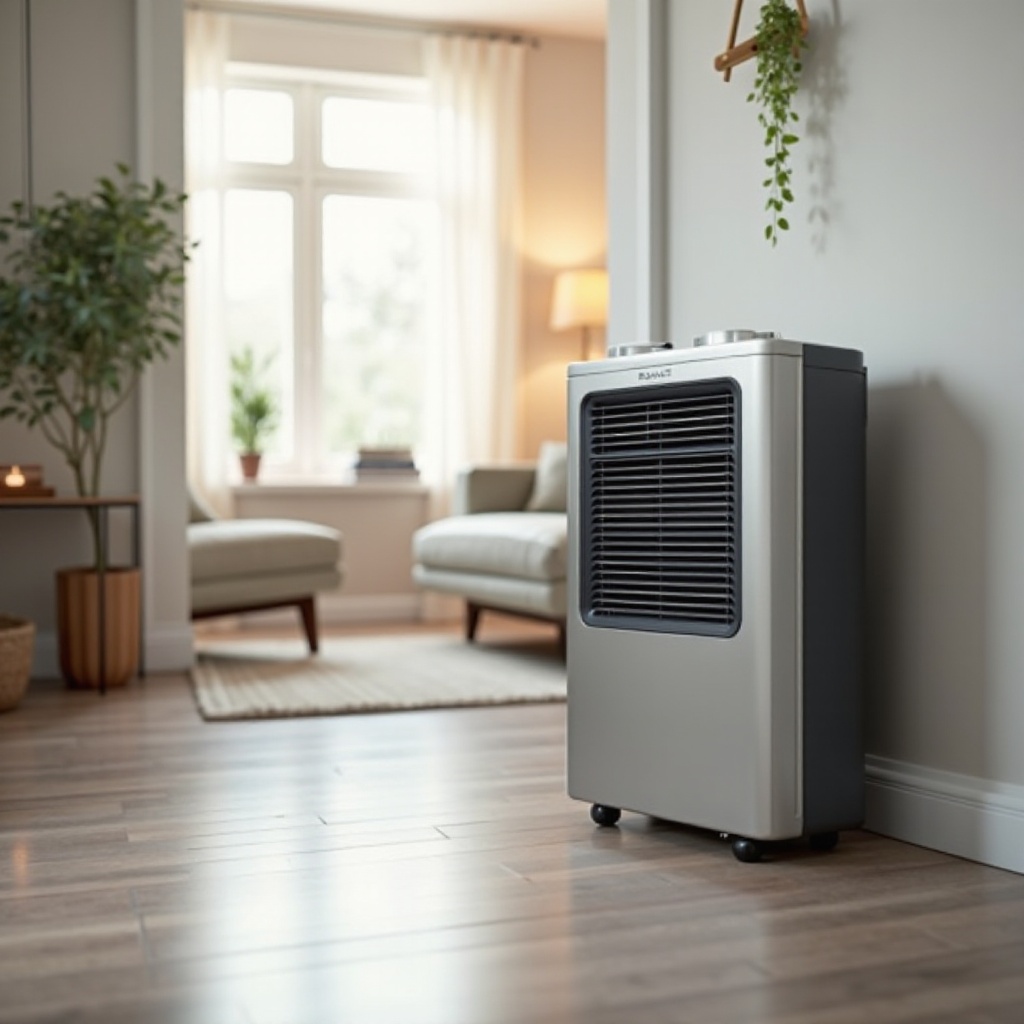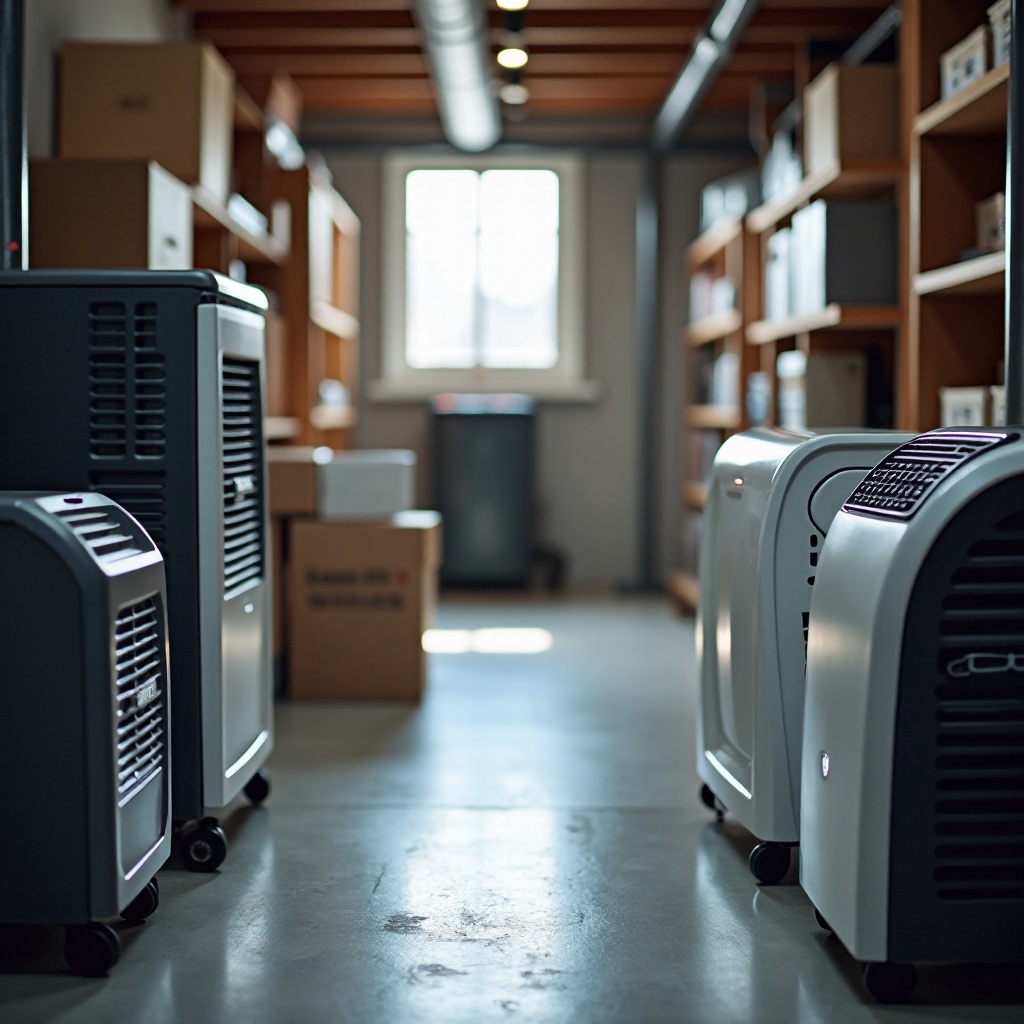Introduction
A basement dehumidifier is an essential home appliance that helps maintain optimal humidity levels, preventing mold growth, structural damage, and unpleasant odors. With technological advancements, the options available in 2024 offer improved features, energy efficiency, and performance. This guide will walk you through why you need a basement dehumidifier, key features to look for, the top models available, and maintenance tips to ensure your basement stays dry and comfortable all year round.

Why You Need a Basement Dehumidifier in 2024
Health Benefits
A damp basement can become a breeding ground for mold and mildew, triggering allergies and respiratory problems. Using a dehumidifier helps reduce these allergens, making your living environment healthier.
Home Preservation
Moisture in the basement can lead to structural damage over time. It can weaken your home's foundation and cause paint to peel. A dehumidifier helps preserve the integrity of your home structure by keeping it dry.
Comfort and Smell Reduction
High humidity levels can make your basement feel sticky and uncomfortable. Additionally, damp basements often develop a musty smell. Dehumidifiers help maintain a comfortable atmosphere and eliminate unwanted odors.
Keeping your basement dry has numerous benefits, from health to home preservation. Now, let's explore the key features you should consider when buying a dehumidifier for your basement in 2024.
Key Features to Look for in a Basement Dehumidifier
Coverage Area
Choose a dehumidifier that can handle the size of your basement. Measure the square footage of your basement to pick a model that covers the entire area effectively.
Energy Efficiency
With energy costs continually rising, selecting an energy-efficient dehumidifier can save you money in the long run. Look for models with the Energy Star rating, which identifies the most efficient appliances.
Noise Level
A noisy dehumidifier can be intrusive, especially if your basement is used as a living space. Check the decibel ratings to find a quieter model that won't disrupt your activities.
Usability and Controls
Look for dehumidifiers that offer intuitive controls, such as digital displays and programmable timers. Features like auto shut-off and continuous drainage can also add to the convenience.
Additional Features
Consider extra features like built-in air purifiers, antimicrobial tanks, and frost controls to enhance the dehumidification experience.
Understanding these features will help you choose the right dehumidifier that meets your needs. Here, we will guide you through the best dehumidifiers available in 2024.
Top 5 Basement Dehumidifiers for 2024
Brand X Model A
This model boasts high performance with a large coverage area of up to 4,500 square feet. It’s Energy Star certified, operates quietly, and features a continuous drainage option.
Brand Y Model B
Perfect for mid-sized basements, this dehumidifier combines affordability with efficiency. It offers a user-friendly digital display and a washable air filter to purify the air.
Brand Z Model C
Known for its super-quiet operation, this model includes smart humidity controls, letting you set your desired humidity level. It also has a robust built-in pump for easy water removal.
Brand W Model D
This model covers large basements and includes an auto-restart function, which is useful during power outages. It has a sleek design and offers various speed settings for better control.
Brand V Model E
Ideal for small to medium basements, this dehumidifier offers energy-efficient operation and modern features like Wi-Fi connectivity, allowing remote control via a smartphone app.
After reviewing the top models, we will now compare their features and benefits to make it clear which may be your best choice.

Detailed Comparison of the Top Dehumidifiers
Performance and Capacity
Each model differs in performance, coverage area, and water capacity. While Brand X covers the largest area, Brand Z offers the quietest operation paired with smart controls. Brand W demonstrates resilience with its auto-restart feature.
Price and Value
Affordable options like Brand Y combine good performance with cost-efficiency, whereas high-end models like Brand X and Brand Z offer advanced features at a higher price point.
User Feedback and Ratings
Customer reviews indicate high satisfaction with Brand X for large basements, while Brand V is preferred for its smart connectivity features in smaller spaces. Overall ratings show positive feedback for durability and ease of use across these models.
Once you choose the right dehumidifier based on this comparison, proper installation and maintenance will ensure its optimal performance and longevity.
Installation and Placement Tips
Optimal Locations
Place the dehumidifier in the center of the basement or the area where it is most damp. Ensure there’s enough space around it for air to circulate freely.
Installation Best Practices
Set the dehumidifier on a flat surface and ensure it is level. Use a hose for continuous drainage if needed, and make sure it’s placed near a suitable drainage point.
Safety Precautions
Keep the dehumidifier away from sources of heat, such as heaters or direct sunlight. Make sure electrical cords are not frayed and avoid placing the unit near water sources to prevent electric shocks.
Proper placement is crucial for efficient dehumidification. Follow these tips for installation and, next, we’ll cover maintenance and troubleshooting to keep your dehumidifier running smoothly.
Maintenance and Troubleshooting Tips
Routine Maintenance Checklist
- Clean the air filter every two weeks.
- Empty the water tank regularly if not using continuous drainage.
- Wipe down the exterior to remove dust.
Common Issues and Solutions
- 'Unit Not Powering On:' Check the power source and ensure it’s plugged in correctly.
- 'Reduced Efficiency:' Clean the air filter and check for any obstructions.
- 'Water Leaks:' Ensure continuous drainage hose is properly connected and not clogged.
When to Seek Professional Help
If the dehumidifier stops working even after troubleshooting, it may require professional repair. Issues like coolant leaks or electrical problems should be handled by certified technicians.
By following these maintenance tips, your dehumidifier will remain effective and efficient. To wrap things up, let’s summarize the key points covered in this guide.

Conclusion
Choosing the best basement dehumidifier in 2024 requires understanding your specific needs and knowing what features to look for. With the right dehumidifier, you can improve your home environment, preserve your property, and enjoy a more comfortable living space. Follow our top picks, installation advice, and maintenance tips to keep your basement dry and healthy.
Frequently Asked Questions
What Size Dehumidifier Do I Need for My Basement?
Measure the square footage of your basement and select a dehumidifier that is designed to handle that area. Refer to the model specifications for coverage.
How Often Should I Empty the Water Tank?
If not using continuous drainage, empty the water tank once it fills up. For most models, this means emptying it every one to two days.
Can I Connect a Dehumidifier to a Drain Hose?
Yes, many modern dehumidifiers come with an option to connect a drain hose for continuous operation, allowing the collected water to drain directly into a sump or floor drain.
